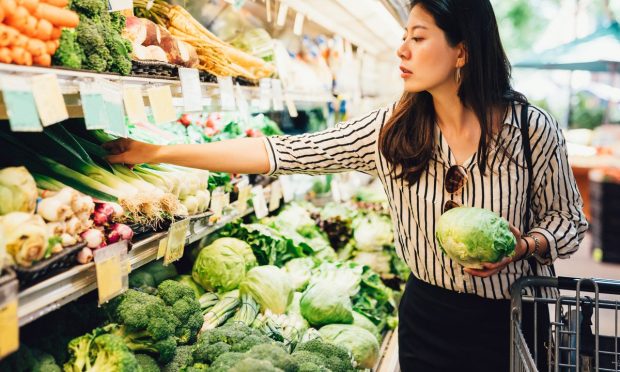Is Grocery BNPL’s Next Big Frontier?

Nearly two years out from the boost they received in the early months of the pandemic, grocers are facing new challenges. With the increase in sales and traffic grocers received from consumers’ shift to cooking and eating at home beginning to normalize, new innovations may be needed.
Not only are consumers returning to restaurants, but rising food costs are eating into grocers’ margins, with consequent price increases prompting shoppers to make fewer purchases.
To hold onto pandemic gains, grocers will need to give consumers an in-store experience that will keep them coming back.
“Grocers were financially one of the big beneficiaries of the pandemic,” Tristan Roffey, vice president and group head of Global Strategy at Blackhawk Network, told PYMNTS in an interview. “Consumers were shifting spend away from restaurants to grocery stores. [What we started to see in the second half of 2021 is that consumers], particularly younger ones, are going back to restaurants. Grocery retailers in 2022 really stand to suffer by losing share of stomach with those consumers.”
Roffey argued that by updating payment options, grocers can boost spending and build loyalty while providing an experience that evolves alongside consumers’ habits, enabling them to maintain more of those share gains.
Better Late Than Never
Roffey predicted that buy now, pay later (BNPL) will take hold in the grocery industry in the months ahead.
“U.S. grocery is probably one of the only verticals that really hasn’t adopted buy now, pay later en masse, but we think that that’s probably going to change this year,” he said.
Research from the January study “Main Street Merchant Index: Optimism Amid Inflation Edition,” a PYMNTS and Melio collaboration, found that only 22% of these businesses offer BNPL options, and 25% plan to implement BNPL in the next year.
Get the report: Optimism Amid Inflation Edition
Roffey noted that Blackhawk Network’s partner data from grocers that offer BNPL has already shown that the average basket tends to be anywhere between 75% and 92% larger when shoppers use the purchasing method.
According to data from PYMNTS’ study “What Consumers Expect From Their Grocery Shopping Experience,” created in collaboration with ACI Worldwide, 40% of millennial grocery shoppers are “very” or “extremely” interested in using BNPL, as are 37% of bridge millennials.
Read more: Digital Features Can Help Grocers Win Over 43% of Shoppers
In October, Blackhawk announced a partnership with BNPL platform Zip to offer the payment method for gift card purchases and to offer Zip-powered BNPL payments in stores at the point of sale (POS) using QR codes.
See more: Zip Teams With Blackhawk Network to Drive BNPL
Digital: The Choice of a New Generation
Roffey noted that digital payment methods such as mobile wallets can be vital to winning the spending of the shoppers of the future, with young consumers especially motivated by tech-enabled convenience.
“These alternative payment methods are just as much about shopping as they are about the payment itself, and so grocers can start to use these mediums to engage with their customers to pull traffic into stores,” he said.
Research from the What Consumers Expect study revealed that 44% of Generation Z, 50% of millennials and 48% of bridge millennials are highly interested in paying for their grocery purchases with mobile wallets, compared with only 28% of Generation X and 7% of baby boomers and seniors who said the same.
Blackhawk Network, for its part, announced a partnership with Giant Eagle last summer to make the grocer the first in the United States to accept PayPal and Venmo in stores. Roffey stated that integrations of this kind increase the total pool of money that grocers can access, freeing trapped currency.
Read more: Giant Eagle Grocery Stores Become First in US to Accept PayPal, Venmo
“Allowing people to use alternative payment methods opens up that value to be spent at merchants, and primarily grocery merchants because that’s where consumers shop the most,” he said.
A Light Touch
Roffey contended that grocers who don’t offer touch-free payment options risk falling behind. He pointed to Canada as an example of a comparable market that’s several years ahead in adopting these technologies, noting that nearly half of all POS transactions there are touch-free. In other countries, that share is even higher.
When they have touch-free options, he noted, consumers become less likely to shop somewhere if the merchant does not offer competitive payment acceptance capabilities, especially because digital payments can be a key part of consumers’ overall omnichannel relationship with the brand.
“Consumers have been clear that not only do they want to pay touch free, but are looking for much more integrated experiences,” he said. “It’s not just the payment itself; it’s about that broader shopping experience.”